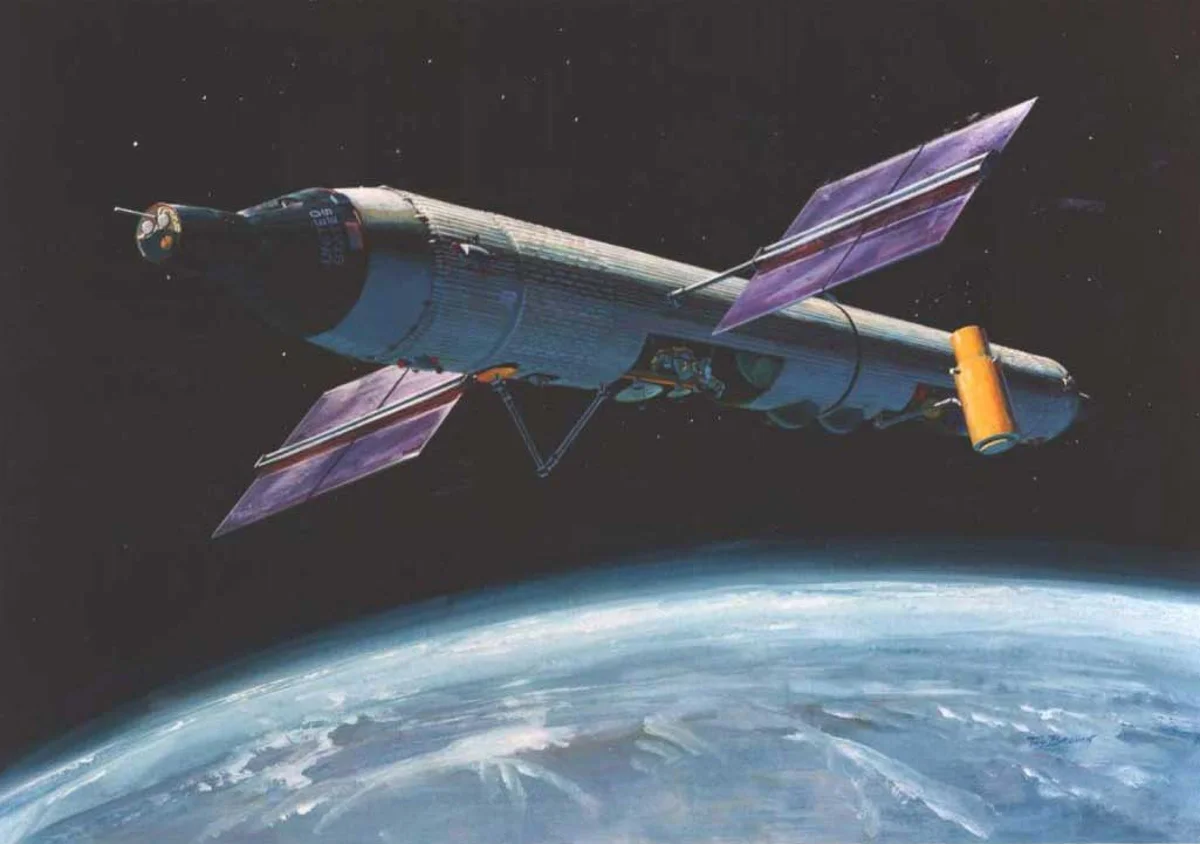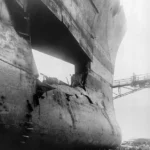The Space Race captivated the world during the Cold War, as the United States and Soviet Union competed for dominance in space exploration. While iconic achievements like the Moon landing are well-known, numerous secret projects and missions never saw the light of day.
These classified initiatives ranged from military space stations to lunar bases, pushing the boundaries of technology and imagination. Some concepts were too ambitious or costly, while others were scrapped due to political shifts or changing priorities.
Examining these unrealized plans offers a glimpse into the era’s technological ambitions and geopolitical tensions. From nuclear-powered rockets to manned spy satellites, these secret projects reveal the ingenuity and determination that fueled the Space Race behind the scenes.
Origins of the Space Race
The Space Race emerged from Cold War tensions and rapid technological progress in the mid-20th century. It became a crucial arena for scientific and ideological competition between the United States and Soviet Union.
Political Tensions and the Space Race
The Space Race began in the 1950s as an extension of the arms race between the United States and Soviet Union. Both superpowers saw space exploration as a way to demonstrate technological superiority and military might.
The launch of Sputnik 1 by the USSR in 1957 shocked the American public and government. This event catalyzed increased U.S. investment in space technology and education.
President John F. Kennedy’s 1961 speech committing to landing a man on the Moon by the end of the decade further intensified the competition. The Space Race became a matter of national prestige and a proxy for the broader ideological struggle of the Cold War.
Early Technological Advancements
Both nations made rapid progress in rocket technology during the 1950s and early 1960s. The Soviet R-7 intercontinental ballistic missile served as the basis for their early space launches.
In the U.S., the Army Ballistic Missile Agency, led by Wernher von Braun, developed the Redstone and Jupiter rockets. These laid the groundwork for more powerful launch vehicles like the Saturn V.
Key milestones included:
- 1957: USSR launches Sputnik 1, the first artificial satellite
- 1961: Yuri Gagarin becomes the first human in space
- 1962: John Glenn orbits Earth, the first American to do so
These achievements drove rapid advancements in materials science, computer technology, and miniaturization. The space programs of both nations spurred innovation across multiple scientific and engineering fields.
Secret Projects and Missions
The Space Race spawned numerous classified initiatives that pushed the boundaries of technology and strategy. These clandestine efforts aimed to gain crucial advantages in space exploration and military capabilities.
Covert Satellite Programs
The Corona program, launched in 1959, marked a major milestone in space-based espionage. This top-secret satellite system captured high-resolution images of Soviet military installations and weapons developments.
The KH-9 Hexagon, nicknamed “Big Bird,” followed in 1971. This massive spy satellite could photograph vast swathes of enemy territory with unprecedented detail.
Project Rhyolite, initiated in 1970, focused on signals intelligence. These satellites intercepted Soviet missile telemetry and communications, providing vital data on their capabilities.
Manned Lunar Landing Plans
The Soviet Union’s secretive N1-L3 program aimed to beat the Americans to the Moon. This ambitious project centered around the massive N1 rocket, designed to launch cosmonauts on lunar missions.
The Soviets also developed the LK lander, a compact spacecraft intended for Moon landings. Unlike NASA’s two-person Apollo lander, the LK was designed for solo missions.
The U.S. military considered Project Horizon, a 1959 plan to establish a permanent lunar base. This Cold War-era concept envisioned a fortified outpost housing up to 20 soldiers by 1966.
Technological Innovations Behind Closed Doors
The Space Race spurred rapid advancements in propulsion, spacecraft design, and communications technologies. These developments occurred largely in secret, with both the US and USSR pushing the boundaries of science and engineering.
Propulsion and Spacecraft Design
Nuclear propulsion emerged as a promising technology for long-distance space travel. Project Orion, a US initiative, explored using nuclear pulse propulsion to power massive spacecraft. The concept involved detonating small nuclear bombs behind the craft to generate thrust.
Soviet engineers developed the RD-270 engine, a high-performance rocket motor using hypergolic propellants. This engine was intended for use in the N1 moon rocket but never flew due to technical challenges.
Both superpowers experimented with ion engines for deep space missions. These highly efficient thrusters use electrical fields to accelerate ionized gases, providing low thrust over extended periods.
Communications and Espionage
The development of advanced satellite technologies revolutionized both communications and intelligence gathering. The US Corona program deployed spy satellites capable of capturing high-resolution images of Soviet territory.
Soviet engineers created the Molniya communications satellite system, utilizing highly elliptical orbits to maintain coverage over high-latitude regions. This technology proved crucial for maintaining communications across the vast Soviet landmass.
Encryption techniques advanced rapidly to protect sensitive transmissions. The KH-11 KENNEN reconnaissance satellite, launched by the US in 1976, utilized digital imaging and near-real-time data transmission capabilities.
Ground-based tracking stations were established globally to monitor spacecraft and intercept communications. These facilities played a vital role in both space exploration and intelligence operations throughout the Cold War.
Collaboration and Competition
The Space Race involved complex dynamics of cooperation and rivalry between nations and agencies. These interactions shaped the trajectory of space exploration during the Cold War era.
International Alliances
The United States and Soviet Union formed strategic partnerships with other nations to advance their space programs. NASA collaborated with European space agencies on satellite technology and scientific missions. The USSR partnered with Eastern Bloc countries, sharing resources and expertise.
These alliances extended beyond ideological lines. The Apollo-Soyuz Test Project in 1975 marked a significant moment of US-Soviet cooperation in space. This joint mission demonstrated the potential for international collaboration despite political tensions.
Some partnerships focused on specific technologies. The US and Canada worked together on communications satellites, while the Soviet Union and India cooperated on remote sensing capabilities.
Inter-agency Rivalries
Within nations, competition between agencies fueled innovation but also led to inefficiencies. In the US, NASA and the Air Force vied for control of human spaceflight programs. This rivalry resulted in parallel development of similar technologies.
The Soviet space program faced internal conflicts between design bureaus. Sergei Korolev’s OKB-1 and Vladimir Chelomei’s OKB-52 competed for funding and political support. This competition sometimes hindered progress on key projects.
Rivalries extended to intelligence agencies. The CIA and NRO developed separate reconnaissance satellite programs, each striving to prove their superiority in gathering intelligence from space.
Cancelled Missions and What Could Have Been
The Space Race spawned numerous ambitious projects that never came to fruition. These cancelled missions reveal intriguing possibilities of what might have been achieved during the Cold War era.
Abandoned Lunar Bases
Project Horizon, proposed by the U.S. Army in 1959, envisioned a permanent lunar outpost. The base would have housed 12 soldiers and served as a military observation post.
The Soviets had similar plans with their DLB (Long-Term Lunar Base) project. It aimed to establish a crewed scientific station on the Moon’s surface by the mid-1970s.
Both projects faced significant technical and financial hurdles. They were ultimately shelved in favor of other space exploration priorities.
Scrapped Orbital Stations
The U.S. Air Force’s Manned Orbiting Laboratory (MOL) program was cancelled in 1969. It aimed to launch a military space station for reconnaissance missions.
• Planned crew: 2 astronauts
• Mission duration: 30 days
• Key features: Spy cameras, living quarters
The Soviet Almaz program, a series of military space stations, saw partial implementation. Three stations were launched, but the program was discontinued in 1976.
NASA’s proposed Skylab B, a backup for the successful Skylab, never flew. It now resides in the National Air and Space Museum as a testament to unrealized space ambitions.
Impact of Secret Projects on the Cold War
Secret space projects shaped Cold War dynamics through intelligence gathering and military strategy. These clandestine efforts had far-reaching consequences for superpower relations and technological development.
Espionage and Intelligence Gathering
Secret space projects revolutionized espionage during the Cold War. Spy satellites provided unprecedented intelligence capabilities, allowing the U.S. and Soviet Union to monitor each other’s activities from orbit.
The Corona program, launched by the CIA in 1959, marked a significant breakthrough. These satellites captured high-resolution images of Soviet military installations, providing crucial data on nuclear arsenals and troop movements.
The Soviet Union developed its own spy satellite program, Zenit, in response. These reconnaissance missions reduced the risk of surprise attacks and helped maintain a delicate balance of power between the superpowers.
Signals intelligence satellites also played a vital role. Programs like the U.S. Rhyolite and Soviet Tselina series intercepted radio communications, providing valuable insights into enemy capabilities and intentions.
Military Strategy and Space
Secret space projects had a profound impact on military strategy during the Cold War. Both superpowers recognized space as a new frontier for warfare and deterrence.
The development of anti-satellite weapons became a priority. The Soviet Union tested its first ASAT system in 1968, while the U.S. pursued similar capabilities with Project 437.
Space-based early warning systems emerged as crucial components of nuclear deterrence. The U.S. deployed its Missile Defense Alarm System (MIDAS) in 1960, capable of detecting ICBM launches within minutes.
Military space stations were also explored. The Soviet Almaz program aimed to create armed orbital outposts, though only unarmed versions were ultimately launched.
These secret projects fueled an arms race in space, leading to the development of new technologies and shaping military doctrines for decades to come.
Legacy of the Space Race
The Space Race left an indelible mark on history, propelling unprecedented technological progress and capturing the public imagination worldwide.
Technological and Scientific Benefits
The Space Race drove rapid advancements in rocket technology, materials science, and computing. Miniaturization efforts for spacecraft components led to smaller, more powerful electronics. These innovations found applications in everyday life, from satellite communications to weather forecasting.
Space exploration yielded new insights into Earth’s atmosphere and magnetic field. It also spurred medical breakthroughs, including improved cardiac monitoring and water purification systems.
NASA’s Apollo program alone generated over 1,800 spin-off technologies. These ranged from fireproof materials to shock-absorbing shoe insoles.
Cultural and Societal Influence
The Space Race captivated global attention, inspiring a generation of scientists and engineers. It sparked educational reforms, with increased focus on STEM subjects in schools.
Space-themed entertainment flourished, from movies and TV shows to toys and fashion. The iconic “Earthrise” photo taken during Apollo 8 fueled environmental awareness.
The race fostered international cooperation in space, culminating in joint missions like Apollo-Soyuz. It also highlighted the potential for peaceful competition between superpowers.
Space exploration continues to shape public policy and fuel debates on resource allocation and scientific priorities.
References
- NASA (n.d.) – Project Orion: The Nuclear Propulsion Concept That Could Have Changed Space Travel Link
- Smithsonian Air and Space Museum (n.d.) – The Manned Orbiting Laboratory: America’s Abandoned Military Space Station Link
- CIA (n.d.) – The Corona Program: America’s First Eye in the Sky Link
- Russian Space Web (n.d.) – The Soviet N1 Rocket: The Failed Rival to Apollo Link
- National Reconnaissance Office (n.d.) – KH-9 Hexagon: The Spy Satellite That Changed Cold War Intelligence Link




